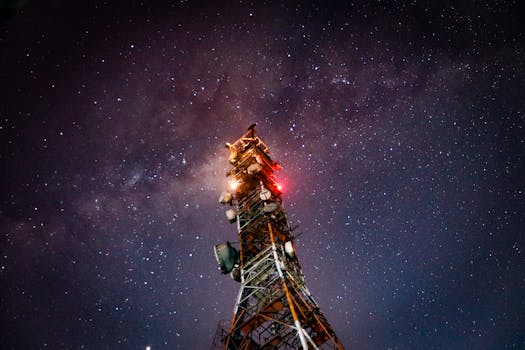
Starlink: Revolutionizing Global Internet Connectivity with Satellite Technology
Starlink, the focus keyword, is a revolutionary satellite constellation developed by SpaceX, founded by Elon Musk. The primary objective of Starlink is to provide high-speed, low-latency internet connectivity worldwide, bridging the digital divide and transforming the way we communicate. With its cutting-edge technology, Starlink has the potential to connect the unconnected, enabling billions of people to access the internet and participate in the global digital economy.
How Starlink Works
Starlink is a constellation of low-Earth orbit (LEO) satellites, designed to provide fast and reliable internet connectivity. The satellites are equipped with advanced technology, including Hall-effect thrusters, star trackers, and high-gain antennas. Each satellite is approximately the size of a car and weighs around 227 kilograms. The satellites are launched into space using SpaceX’s Falcon 9 rockets and are designed to operate for around five to seven years.
The Starlink system uses a phased array antenna to transmit and receive data, allowing for high-speed communication with minimal latency. The satellites communicate with ground stations, which are connected to the global internet backbone. This enables users to access the internet and communicate with others worldwide, regardless of their geographical location.
Benefits of Starlink
Starlink has numerous benefits, including providing internet access to remote and underserved communities, enabling global connectivity, and transforming the way we communicate. With Starlink, people can access the internet from anywhere, at any time, using a compact and portable user terminal. This has the potential to bridge the digital divide, enabling billions of people to access the internet and participate in the global digital economy.
Starlink also has the potential to transform the way we communicate, enabling real-time communication and collaboration across the globe. The low latency and high-speed connectivity provided by Starlink make it ideal for applications such as video conferencing, online gaming, and cloud computing.
Challenges and Future Developments
While Starlink has the potential to revolutionize global internet connectivity, there are several challenges that need to be addressed. One of the main challenges is the high cost of launching and maintaining a large constellation of satellites. SpaceX has developed a reusable rocket system, which has significantly reduced the cost of launching satellites into space.
Another challenge facing Starlink is the risk of space debris. With thousands of satellites in orbit, there is a risk of collisions and the creation of space debris. SpaceX has developed a system to de-orbit its satellites at the end of their life, reducing the risk of space debris.
Despite these challenges, Starlink is rapidly expanding its constellation of satellites, with thousands of satellites already in orbit. SpaceX plans to launch tens of thousands of satellites in the coming years, providing global coverage and transforming the way we communicate.




